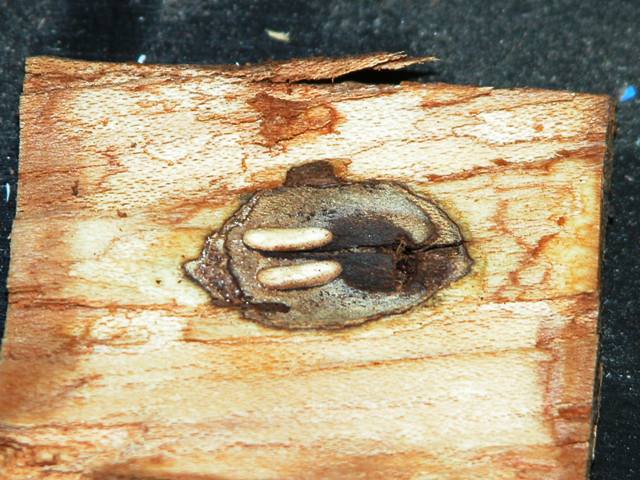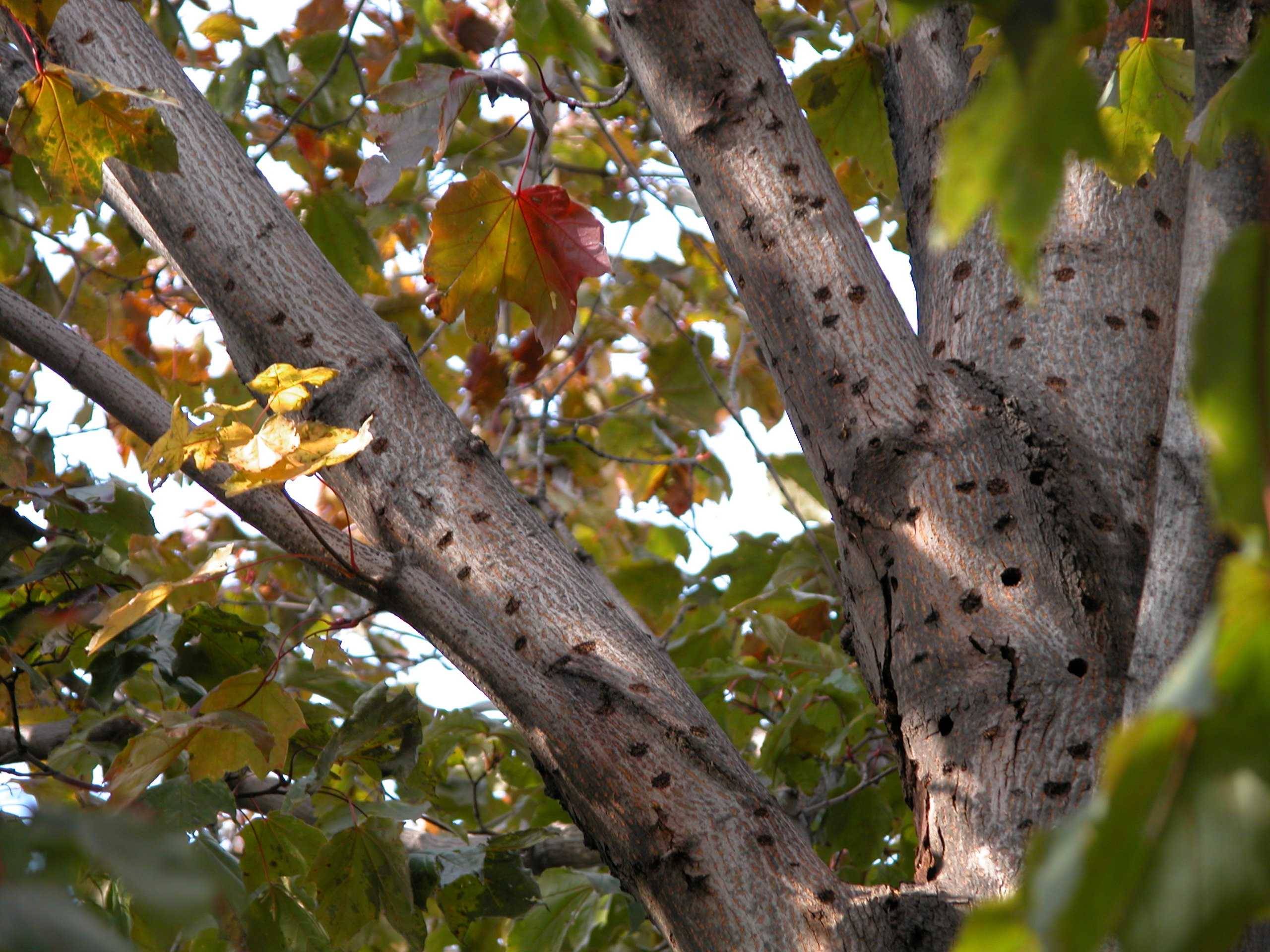Asian long-horned beetle
Information about the Asian long-horned beetle (Anoplophora glapripennis), a wood-boring insect that attacks several species of hardwoods.
Overview
- Invasive - native to China and other parts of Asia.
- The Asian long-horned beetle has been intercepted several times in imports to Canada.
- Two infestations have been found in Ontario:
- The first infestation was found in 2003 near the border of Toronto and Vaughan; infested and susceptible trees were removed under a multi-agency program led by the Canadian Food Inspection Agency; the infestation was declared eradicated in April 2013 after 5 years of surveying found no beetles or infested trees.
- The second infestation was found in August 2013 in Mississauga and Toronto - this infestation is under active eradication; infested trees were found in an industrial area near Lester B. Pearson International Airport; the infested trees and susceptible trees within 800 m were removed in 2013 and 2014 to eradicate the infestation - surveys are ongoing to ensure all of the beetles and infested trees have been detected.
“Invasive” refers to a species that has moved outside of its native habitat and threatens the new environment, economy or society by disrupting local ecosystems.
Host species
The Asian long-horned beetle attacks and kills many different species of hardwood of any age or size. However, in Ontario complete development of the beetle has only been observed on:
- maples (Acer)
- birches (Betula)
- poplars (Populus)
- willows (Salix)
Species identification and life cycle
- Asian long-horned beetle adults are large, robust insects measuring 20 to 35 mm in length and 7 to 12 mm wide.
- The insect has long, segmented antennae, a typical beetle shape and is shiny black with up to 20 white dots on its back.
- Female adults chew a pit on the bark and insert a single egg; it resembles a grain of rice and hatches in 1-2 weeks.
- The larvae are round, grub-like and cream-coloured.
- Larvae initially feed in the cambial area just under the bark and eventually tunnel deep into the wood where they continue to feed until winter.
- Pupation (when the adult structure forms) begins in late April or early May; adults begin to emerge in May, with peak emergence in July.
- Mating begins 2-3 days after emergence; females live an average of 40 days and are capable of laying up to 80 eggs.
- Since the insect’s rate of development depends on temperatures during the growing season, a portion of the population can take 2 years, rather than 1, to complete its life cycle.


Symptoms and damage
- Egg-laying pits chewed by the female beetles in the bark on the branches and trunk are oval or lemon-shaped; the pits are approximately 10 to 15 mm in diameter - they are light coloured when fresh, but darken with age.
- As the larvae begin feeding under the inner bark, liquid or foaming sap may be visible and often attracts other insects such as bees, wasps or butterflies.
- As the larva matures it bores into the sapwood and heartwood, chewing large tunnels which structurally weaken the tree.
- The larval activity eventually cuts off nutrient and water transport; the tree starts to die from the top down; leaves wilt and the canopy may appear sparse.
- Adults emerge through a round exit hole approximately 1.5 to 2 cm in diameter.

Control measures
The beetle has no natural enemies within Canada's forests capable of controlling the insect’s population or reducing its damage. No effective insecticides are registered in Canada with proven efficacy to eradicate the Asian long-horned beetle. In Canada, the recommended method for eradication is to cut down the infested trees and any nearby trees that may be susceptible to attack. The felled trees are then burned or fed through a wood chipper to kill any larvae, pupae or adults that may be in the tree.